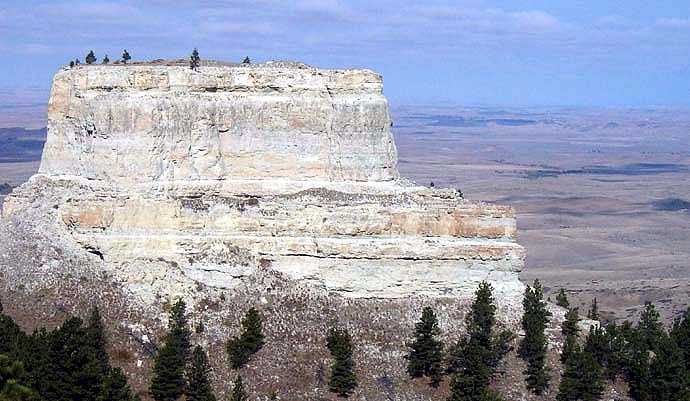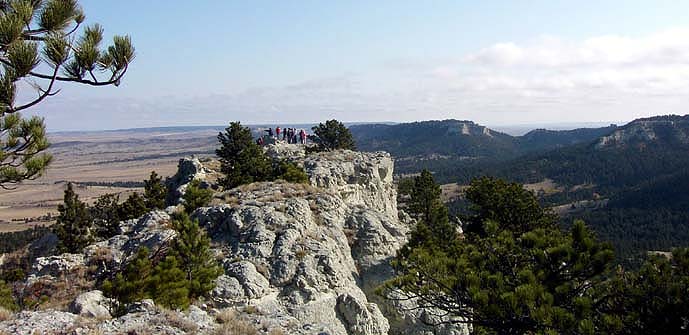|
Chalk Buttes near Ekalaka
 Photo by Gwenith Schultz
A “misnomer” . . .
This photo shows one of the Chalk Buttes located in the
remote southeastern corner of the state, about 10 miles southwest of
Ekalaka. Although they are called Chalk Buttes, they are not made
of chalk, but rather an especially white sandstone. “Chalk” is actually a soft white to gray limestone composed
of the hard coverings of microorganisms and some bottom dwelling
animals such as ammonoids and pelecypods in a matrix of finely crystalline calcite. As the organisms die their hard parts
(shells, etc.) accumulate on the sea floor where they are eventually
crushed beyond recognition by layers deposited above them. If the
material becomes so compacted that it is hard, geologists would simply
call it limestone. Less compaction will result in the softer (less
durable) chalk. England’s White
Cliffs of Dover are a great example of chalk.
When dinosaurs ruled Montana . . .
The Chalk Buttes of southeastern Montana are made of sandstone
deposited in the later part of the Cretaceous Period, which ended about
65 million years ago. The Chalk Butte sandstones are part of the Colgate Formation, which is found throughout
much of eastern Montana just below the Hell Creek Formation; the last
layers of sediment deposited before the extinction of the dinosaurs at
the end of the Cretaceous Period. Evidently the sand that makes up the
buttes was deposited in some sort of valley (basin), west of the
shrinking interior
seaway that split prehistoric North America in
two.
Chalk it up to the rock cycle . . .
In
order for sand to become rock (lithification) many processes happen
over a long period of time. First the sand (usually pieces of quartz)
originates from pre-existing rock such as granite. As the granite
breaks down (weathering) the sand is transported, often by running
water (erosion), to a basin where it is deposited (deposition). As
millions of years go by the layers of sand may experience many more
“diagenic” processes, including compaction, dewatering, cementation,
dissolving of certain mineral components, replacement of minerals by
other
mineral phases, heat and pressure of deep burial, etc. Not only did
these processes change the sand into sandstone, but they also bleached
the rock giving it its chalky appearance.
 Photo by Gwenith Schultz
Term: matrix
|









